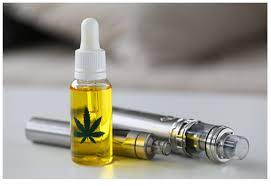The ideal environment for plants to thrive in a grow space requires more than lighting and nutrient management. One crucial aspect often overlooked is that of the HVAC (Heating, Ventilation, and air Conditioning) method. A properly designed HVAC system will ensure that plants receive the right temperature, humidity, and air circulation for them to thrive. Here’s a comprehensive guide to knowing and establishing an HVAC system for the grow room hvac.
Temperature Control
Temperature regulation is vital to the health of your plants. Most plants require a consistent temperature range to grow optimally. In general, a room for growing should maintain temperatures between 65degF and 80% (18degC to 27degC) in the daytime and somewhat cooler at night. HVAC systems equipped with cooling and heating options help maintain these temperature ranges to prevent extremes that could cause stress to plants or hinder growth.
Humidity Management
The humidity levels directly affect the health of the plant, affecting everything from nutrient intake to the likelihood of developing mildew and mold. The ideal humidity ranges from 40 to 60%, and varies based on plant species and growth stage. HVAC systems typically include dehumidifiers or humidifiers as part of the set-up to control these levels effectively. A proper ventilation system also aids in controlling humidity by allowing humid air to go out while fresh air can enter.
Air Circulation
Air circulation is essential to avoid hot spots and ensures that the plants get enough CO2. A well-balanced HVAC system consists of the use of ductwork and fans to distribute all air equally across the growing room. Oscillating and inline duct fans are commonly used to increase air circulation and to prevent stagnant conditions. This circulation is crucial for preventing issues like diseases or burns on the leaves.
Choosing the Right System
The choice of the right HVAC system is based on the size of your grow space and the specific requirements. For smaller spaces, a window air conditioner or portable unit combined with a small heater as well as a dehumidifier might suffice. For larger grow rooms, you may need the more advanced system, which includes central cooling, a powerful heater and a built-in dehumidifier. Certain advanced systems may even incorporate CO2 controllers for greater accuracy.
Energy Efficiency
Grow room HVAC systems are energy-intensive. Making sure to choose energy-efficient models and incorporating programmable thermostats can aid in reducing energy usage. Also, routine maintenance, like cleaning filters and making sure that the ductwork is properly sealed, helps keep the system running efficiently and increases its longevity.
Conclusion
An effective grow room hvac is vital to creating the ideal environment in a grow room. By controlling temperature, humidity and air circulation you can help your plants grow healthy and productive. Spend time selecting the best equipment and maintaining it well to achieve the greatest results from your business growth.



